History of the place - La Chiesa e località di San Giorgio in San Polo di Piave
Menu principale:
- Italiano
- English
History of the place
The village of San Giorgio was born along the ancient route of the Opitergium-Tridentum, very important pre-Roman road, built by paleovenetian population, it start from the crossroads of the "Tre Piere" (meaning "three rocks") at Oderzo (Opitergium) and led to Trento (Tridentum).

Fig.1: Ancient route Opitergium-Tridentum.

Books on San Giorgio:
- La Chiesa di San Giorgio in San Polo di Piave e i suoi affreschi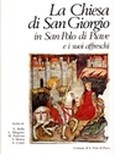
-Antichità romane chiesetta primigenia castello medioevale in San Polo di Piave di A. Gardin commento e note di Luciano Mingotto e Vinicio Cesana 1991
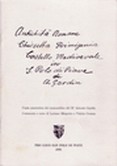
ESAURITO
-Gli acquedotti romani di San Polo di Piave
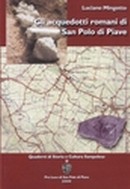
-La chiesa di San Giorgio in San Polo di Piave e gli affreschi di Giovanni di Francia
Giorgio Fossaluzza - 2010
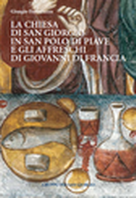
There are signs of the presence in the past of the Paleoveneti in the territory, although many more seem to be those Romans. First of all to the San Giorgio aqueduct, which is dedicated a page into this website.
But a more visible sign of the Roman presence is to be found in the sarcophagus of the second century AD, now becoming the altar of the Church. It was found behind a wall during the excavation.
The territory of San Polo and San Giorgio were once subject to centuriation, this was invented by the Paleoveneti to make better use of the
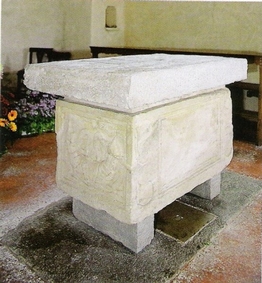
Fig.2: Ancient altar II sec. found
during the excavation work as a
stone in the south wall
spaces of the Po Valley, was then copied by the Romans that it is often wrongly attributed to the creation. The territory of San Polo was centurio along Calli, or the ancient streets, if they find themselves yet different
Cal-Larga Wide street
Cal-Marcia Rotten street
Cal-Larghe Large street
Cal-Bianca White street
Cal-Bassa Low street
Cal-Storta Crooked street
In particular, Cal Bassa, which is located near the church and now reduced to being a little-used headlands, a road was paved, there are still remnants of those rocks to dry typical of Roman roads.
It seems that San Giorgio, holy warrior, has become the patron of this church through the Longobardi (Lombards), their presence in the territory if they talked to Oderzo, where there was one of the most ruthless and terrible battles fought against the Byzantines, the Roman Empire of the East.
In 737 the Church of San Polo is entrusted to Acquileia, and here for the first time speaks of San Giorgio, here is that the church could be built between the seventh and the eighth century AD
Certainly we know of his presence in 1034, cites a document “churches between the rivers Piave and Livenza” which also was named San Giorgio.In 1147 Eccelino il Balbo party for a crusade, to return victorious Saracens got in on the feud of “Villa San Polo” and “avvocazia” (office with noble task of administration, defense, taxes, taxes, vassals, and staff) of San Polo and San Giorgio. But in 1292 the Patriarch Raimondo calls for the return of the assets entrusted Eccellini as a feud, and not lacking excommunications and wars ...
The fourteenth century was one of the hardest for the people of medieval San Giorgio, as occurred in succession a series of misfortune:
-In 1340 the town had a large and severe famine following a massive invasion by locusts, which ate all that the farmers produce in the fields.
-In 1364 there was an invasion of locusts, which move to their obscure the sky, but also of the violent shock of earthquake.
-In 1368 came the Carlo German emperor, then the citizens of the prepared lunches and dinners, but he inflicted a punishing them, burned all their houses.
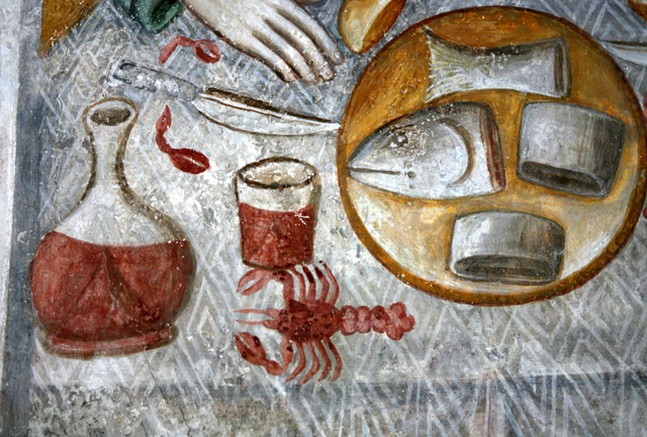
Fig.4: Particular fresco of the Last Supper, are highlighted for shrimp and red wine, perhaps the ancient Raboso. Painted by Giovanni di Francia in 1466.
We know the names of some priest in this period:
pre-Domenico 23.01.1339 13.07.1342
pre-Vinciguerra 23.05.1358
pre-Iacobo 22.07.1403
(citing G. Tomasi, La Diocesi di Ceneda, chiese e uomini dalle origini al 1586)
With the descent of the Hungarians (1419), San Polo and San Giorgio,were aggregated to Conegliano, which will be then granted in fief noble and kind to Christopher Tolentino. In this era in San Giorgio a Mass was celebrated a week, and were painted the frescoes in 1466 by the skilful hands of a painter from Feltre: Giovanni di Francia.
The history of the church is continuing with its expansion with the apse in the eighteenth century and the subsequent loss of two episodes of history of San Giorgio, which in those times was losing its importance as a
patron saint, as it was still a " holy warrior. " Since 1741 is celebrated as the patron saint St. Martino (November 11) rather than St. George (May 23), this is due to the decay of importance of St. George (who remains as the protector) and for the days when drop the two different dates, the celebration in St. Martino was much more convenient than in May, when the land attracted great efforts by the population, composed almost entirely of farmers. The anniversary of St. Martino is not the case, the church was consecrated on that day and since then there are two patron saints for a single church.
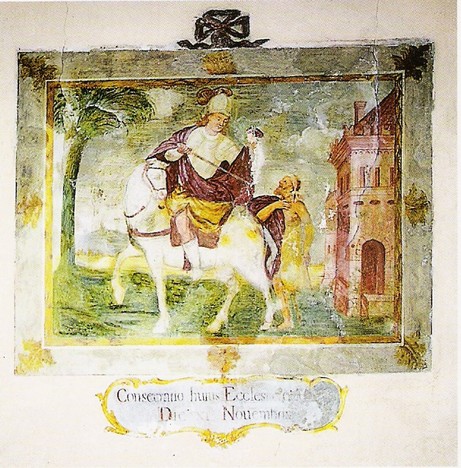
Fig.5: Fresco of St. Martin in the apse of the church (11 November 1741).
St. Martino also coincides with the conclusion of the contract farming, as it was at this time we ended the last work of a year (the Raboso and the corn harvest), and began those for later (tillage, fertilizing, sowing of wheat) . Some sharecroppers, however, received eviction by owners, it would arrive on time each year, in coincidence with the date of St. Peter (June 29), just the time to find a place that could ensure their survival for the next year. Hence the tradition that wants to collect, so joyful, the end of a year's labors in the countryside and at the same time give a little 'joy even to those people who were evicted by the owner, this was a celebration that gathered all “Capifameja", or the heads.
The November 11 date is celebrated this event, before the Mass, to thank God for what he did produce during the year, and then with the traditional "lunch of Capifameja".
It’s to remember that today the church is found immersed in a farm, formed by tall vines bred to "Bellussera" along the route where there is the ancient palace Cesana, this landscape is intact for several years, and we hope the remains for much longer, because it represents an important artistic rural value of San Giorgio.